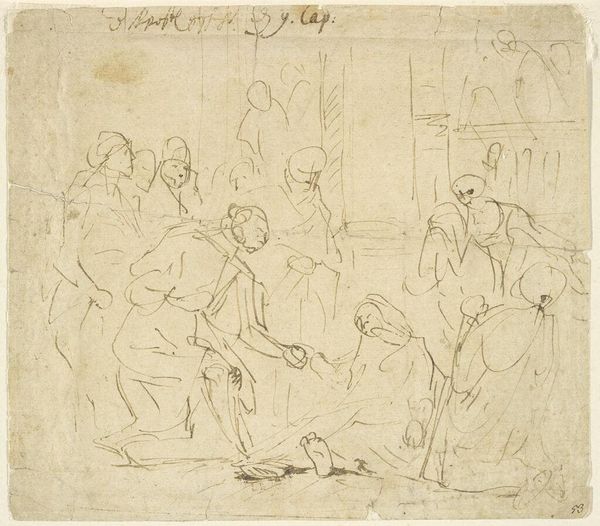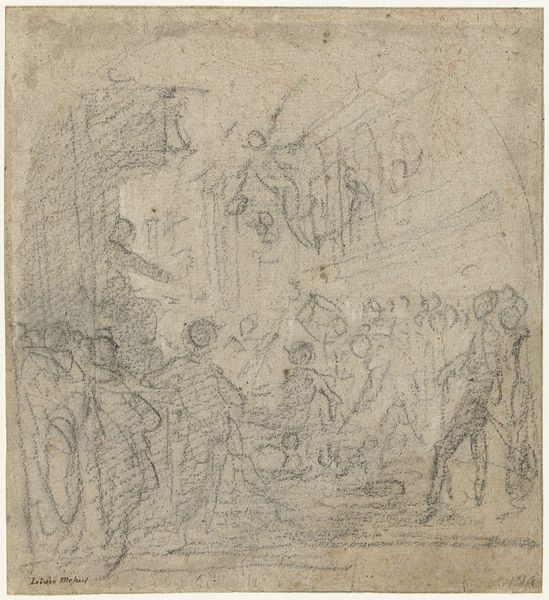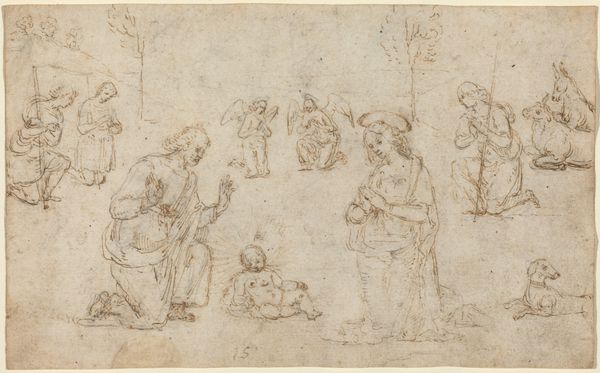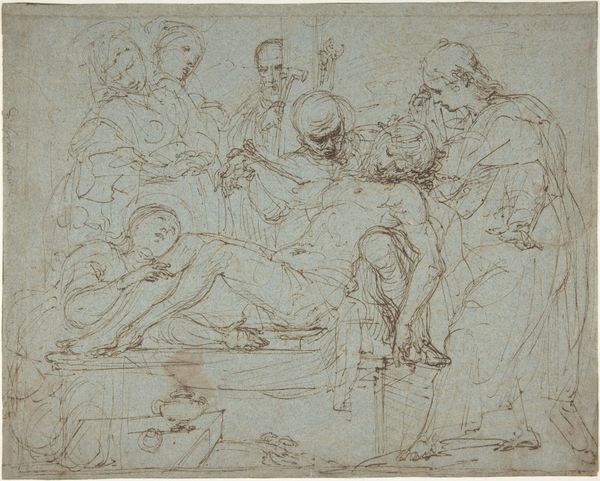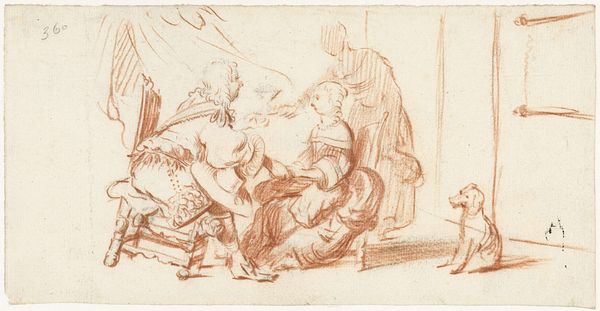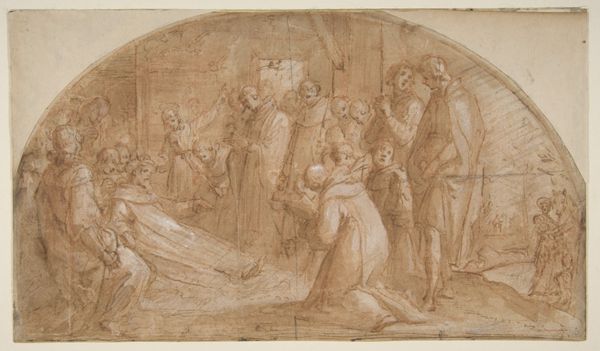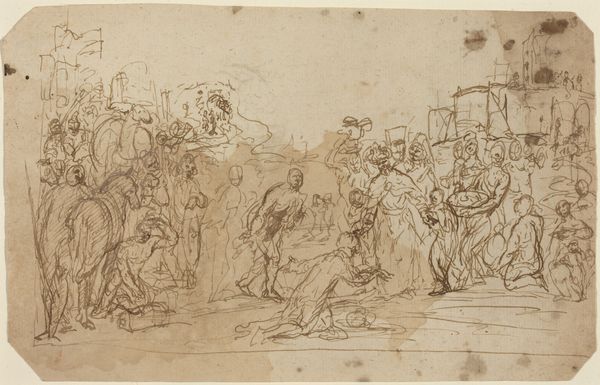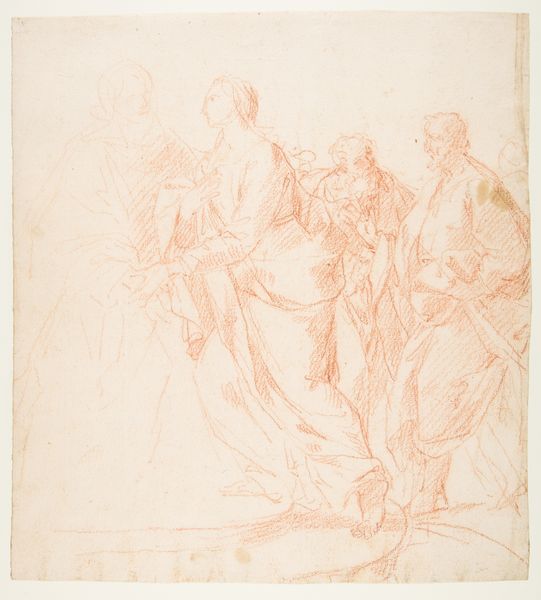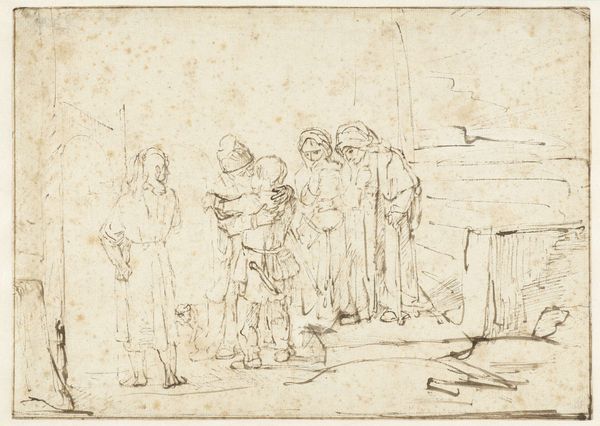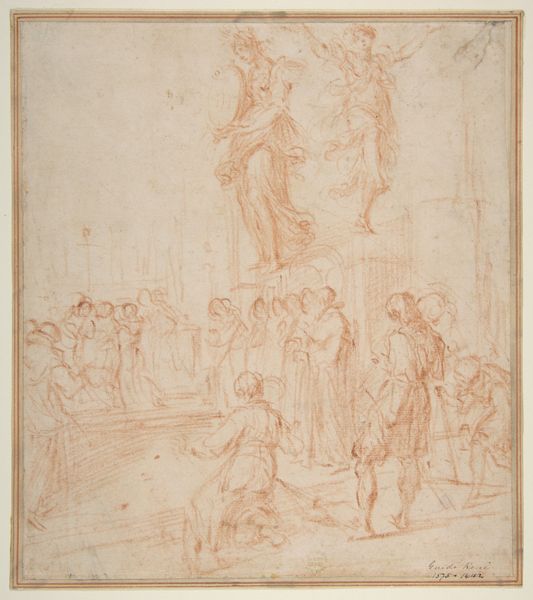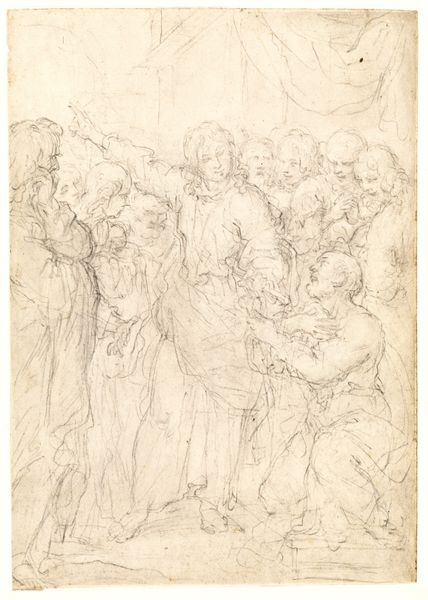
Christus met het kruis, omringd door knielende figuren 1613 - 1677
0:00
0:00
drawing, ink, pen
#
drawing
#
toned paper
#
light pencil work
#
narrative-art
#
pen sketch
#
pencil sketch
#
incomplete sketchy
#
figuration
#
11_renaissance
#
personal sketchbook
#
ink
#
ink drawing experimentation
#
pen-ink sketch
#
sketchbook drawing
#
pen
#
history-painting
#
sketchbook art
Dimensions: height 180 mm, width 222 mm
Copyright: Rijks Museum: Open Domain
Curator: Here we have a drawing from the Dutch Golden Age, attributed to Jan Gerritsz van Bronckhorst, made between 1613 and 1677. It is titled, "Christus met het kruis, omringd door knielende figuren", which translates to Christ with the cross, surrounded by kneeling figures. Editor: My first impression is that this piece has a somber, reverent mood. It's rendered in pen and ink on toned paper, creating an understated, yet poignant, scene. The composition, though seemingly loose, clearly directs the eye towards Christ at its center. Curator: Indeed. Bronckhorst, though not as celebrated as some of his contemporaries like Rembrandt, played an important role in transmitting Italianate styles northward. The choice to depict this very intimate, grief-stricken moment highlights a broader movement toward a more emotional and relatable portrayal of biblical narratives, influenced by the Counter-Reformation’s push for religious art that would move the faithful. Editor: Looking closely, one can see how the artist uses varied line weights to suggest depth and shadow. There’s a real sense of weight to the cross Christ bears, contrasted with the almost ghostly quality of the figures sketched lightly in the background. This adds a strong symbolic dimension – the earthly burden versus the ethereal realm. Curator: Absolutely. Consider also the politics of display. A work like this, accessible through prints and drawings, allowed for personal contemplation. Religious imagery shifted from solely being the domain of the church to entering domestic settings, reshaping devotional practices in the Dutch Republic. Editor: And structurally, that dynamic is really clever. The composition guides the viewers to Christ’s gaze. The bowed heads create horizontal breaks within the frame that seem to amplify His looming presence. There is almost a sense of impending doom but the light and minimal handling makes one want to question, is there also hope? Curator: Precisely. This tension reflects the broader societal shifts occurring then – the rise of individual piety alongside the complex socio-political landscape following the Reformation. Art no longer merely illustrates dogma; it engages with the human experience of faith. Editor: So, in a way, the unfinished character gives the artwork this incredible open quality. Curator: Right, the artist gives us the space to place ourselves in that very narrative, to relate with what may come. Editor: A truly subtle piece with such emotional strength. Curator: Yes, this drawing not only tells a religious story but also reflects the shifting social and cultural roles of art in its time.
Comments
No comments
Be the first to comment and join the conversation on the ultimate creative platform.
